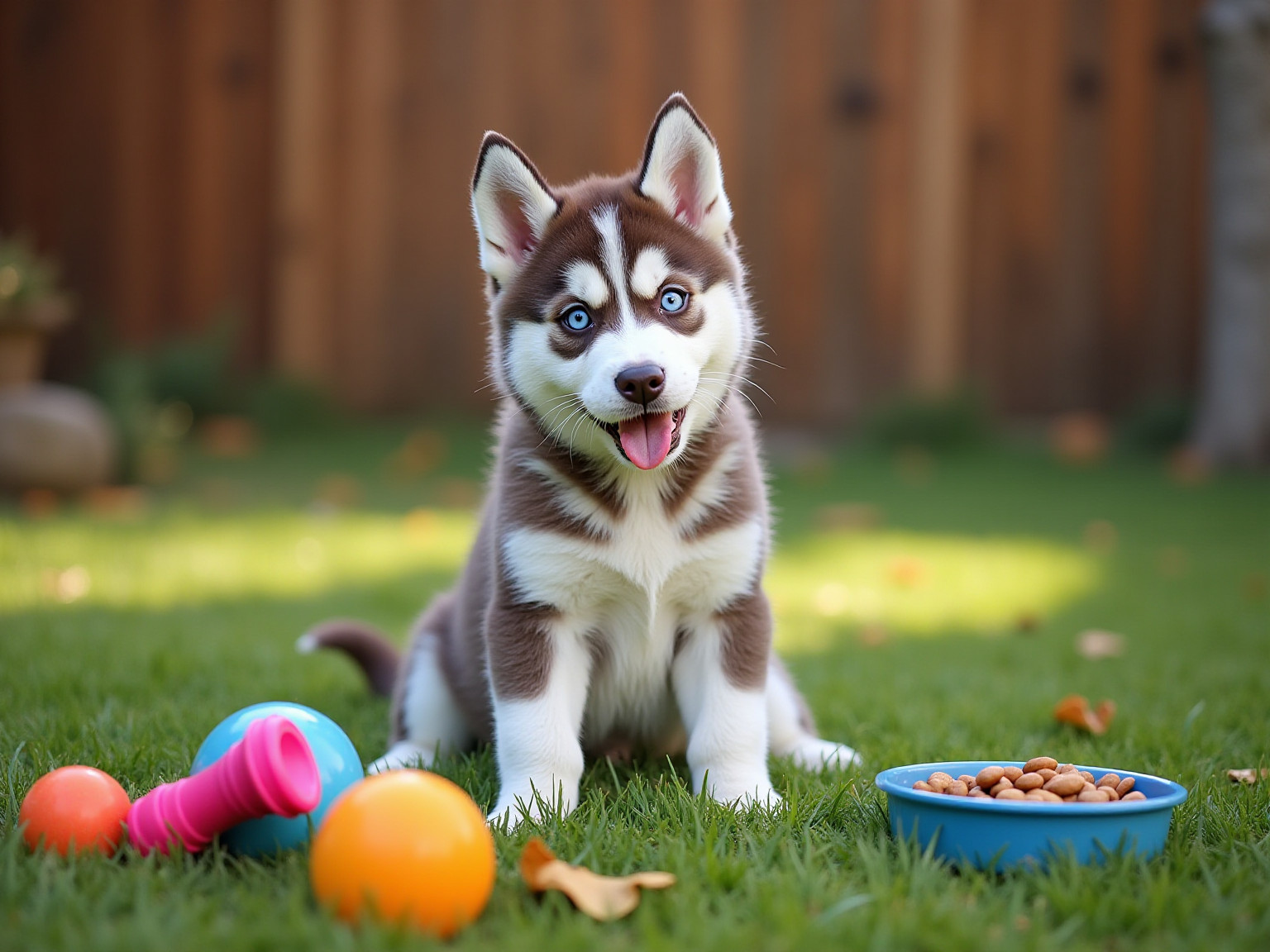
4 Steps to Train Your Husky Puppy Effectively
Overview
Training your husky puppy can be a rewarding journey, yet it often comes with its own set of challenges. Understanding their unique traits is essential, as is creating a distraction-free environment where positive reinforcement can thrive. Many pet owners feel overwhelmed by the intelligence and independence of this breed, which can sometimes make training feel daunting. However, it’s important to remember that with engaging methods, consistency, and a generous dose of patience, you can foster a strong bond with your puppy.
Imagine the joy of watching your husky learn and grow, responding to your commands with enthusiasm. This process not only strengthens your connection but also nurtures their development. By addressing the emotional aspects of training, we can appreciate the rewarding moments that come from overcoming obstacles together. Remember, you are not alone in this journey; many pet owners share similar experiences and feelings.
As you embark on this adventure, take heart in knowing that the right approach can make all the difference. Embrace the challenges, celebrate the small victories, and trust that your efforts will lead to a well-trained and happy husky. With love and dedication, you can create a fulfilling training experience that benefits both you and your furry companion.
Introduction
Siberian Huskies are truly captivating companions, known not just for their intelligence and independence, but also for their boundless energy that can light up any home. Yet, with these unique traits come challenges that can leave owners feeling overwhelmed. It’s important to recognize that these wonderful dogs thrive on physical and mental stimulation, which means that adapting training methods to fit the spirited nature of a Husky is essential. This article will explore effective strategies for training a Husky puppy, beginning with an understanding of their distinct characteristics and addressing common challenges that may arise. With a compassionate approach, you can nurture a well-adjusted and happy pet, fostering a strong bond while navigating the rewarding yet intricate journey of training your beloved companion.
Understand the Unique Traits of Siberian Huskies
The husky puppy, a member of the Siberian Huskies, is truly a remarkable companion, known for its intelligence, independence, and strong prey drive. However, this makes them both fascinating and sometimes challenging to care for. These lively canines require substantial physical and mental engagement to thrive, and understanding their unique characteristics is vital for effective training. Many people perceive Huskies as stubborn; they may not respond to commands as readily as other breeds. Instead, they truly flourish with positive reinforcement and engaging activities that capture their interest.
Incorporating play and social interaction with other dogs into their exercise routine is essential, as Huskies are inherently social animals. This approach not only aligns with their natural instincts but also enhances their learning experience, creating a joyful environment for both the pet and the owner. Notably, Siberian Huskies can withstand temperatures as low as −50 to −60 °C (−58 to −76 °F), showcasing their remarkable hardiness. With an average lifespan of up to 14 years, establishing a consistent exercise regimen early on is crucial to prevent obesity, which can occur if they are overfed or not exercised adequately. By acknowledging and adapting to the distinctive traits of Siberian Huskies, you can develop a plan that nurtures the intelligence and autonomy of your husky puppy, ultimately resulting in a well-adjusted and happy pet.
As a gentle reminder, “They have a high prey drive and may chase cats and livestock,” which emphasizes the importance of careful training and supervision. Additionally, understanding the historical significance of the Chukchi Tribe’s sled dogs can provide valuable insights into the breed’s traits and their role in human history. Embracing these aspects not only enriches your relationship with your Husky but also deepens your appreciation for their unique qualities.
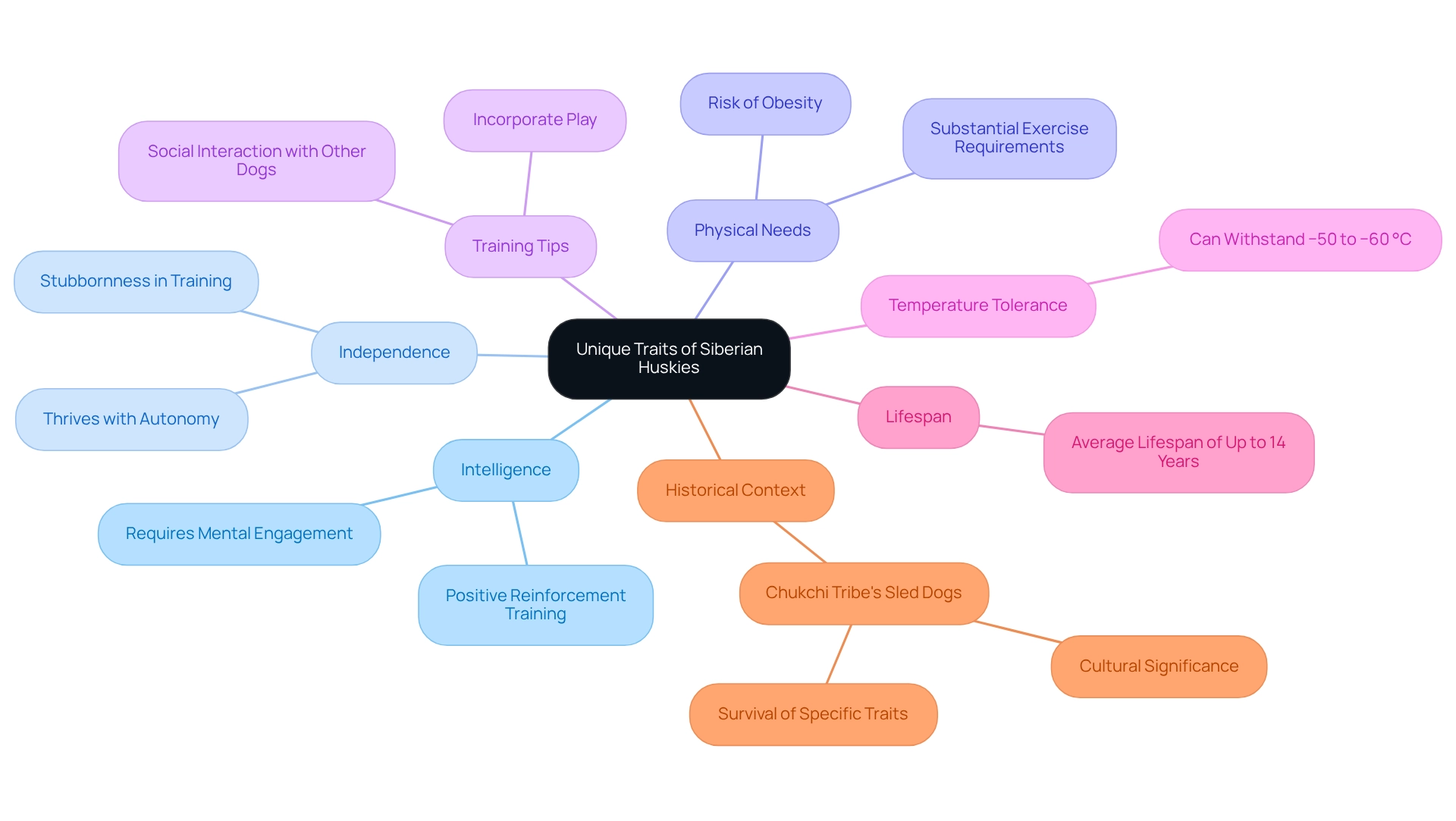
Prepare Your Environment and Gather Training Tools
To effectively train your beloved Husky, it’s important to create a distraction-free environment that fosters focus and learning. Consider choosing a quiet space within your home where your young dog can concentrate without interruptions. Gathering essential tools will further support this process:
- High-Value Treats: Select small, delectable treats that your dog truly loves to motivate positive behavior.
- Clicker: This handy tool precisely marks desired behaviors, helping your dog understand your expectations with clarity.
- Leash and Collar: A sturdy leash and collar are vital for outdoor training sessions, ensuring both safety and control.
- Crate: A crate provides a secure haven for your dog, playing a crucial role in housebreaking and offering comfort.
- Toys: Engaging interactive toys keep your dog mentally stimulated, which is essential for their overall development.
Research shows that a well-prepared environment can significantly enhance training success, making it easier for your dog to learn and thrive. In fact, 54.8% of respondents believe that the recall command is the most important for a dog to master, highlighting the necessity for effective learning tools. As Nicole Cosgrove points out, with 2.8 million dogs accompanying their owners to work, having a well-trained dog is essential for adapting to various settings. Moreover, contemporary coaching philosophies encourage us to move away from outdated dominance techniques, advocating instead for positive reinforcement strategies that align with establishing a distraction-free learning atmosphere. By embracing data-driven approaches, you can ensure a tailored strategy that meets your dog’s unique needs, simplifying your training journey and effectively reinforcing good behavior.
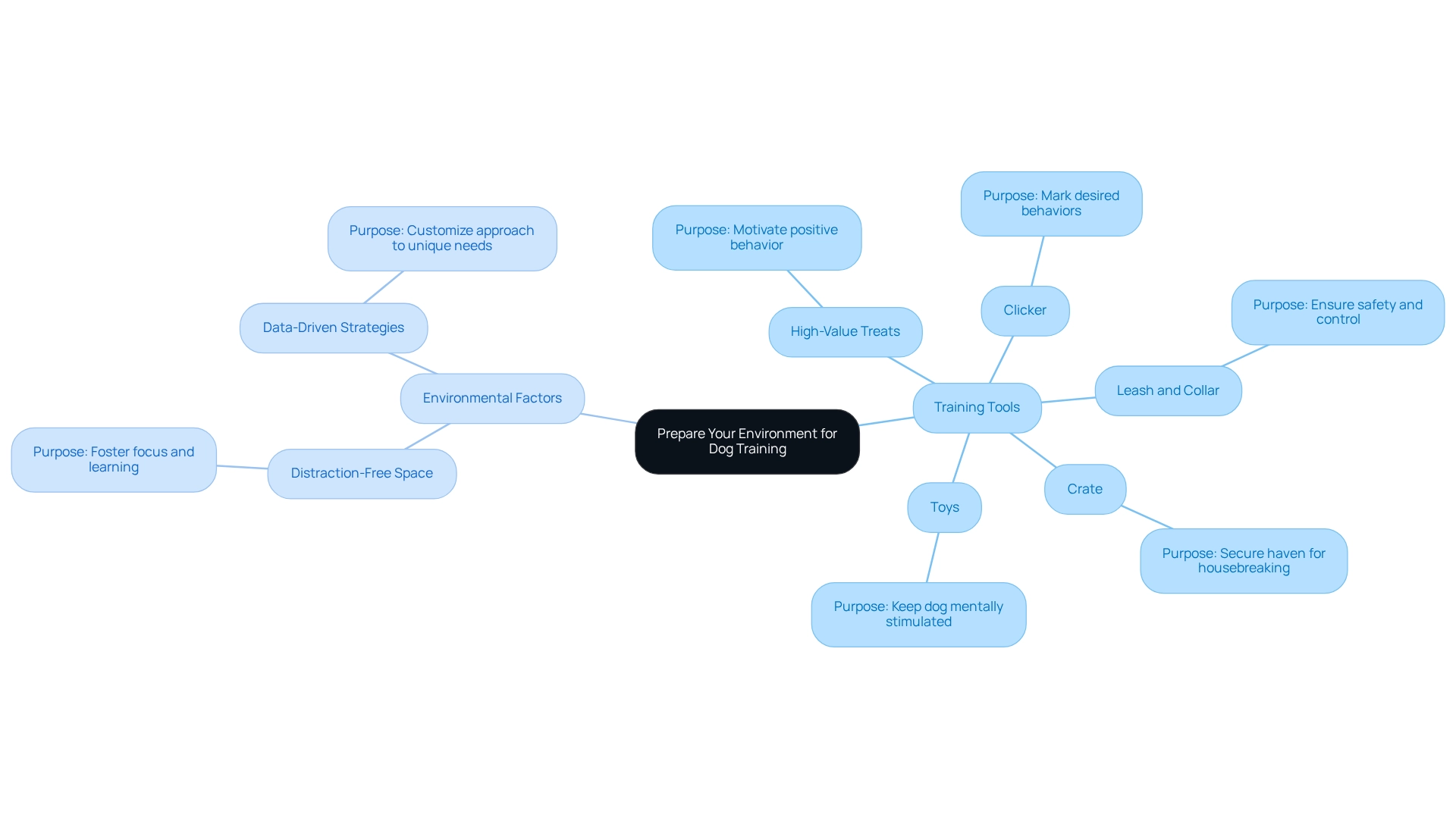
Implement Effective Training Techniques for Your Husky Puppy
To effectively train your beloved Husky, begin with fundamental commands such as ‘Sit’, ‘Stay’, and ‘Come’. It’s essential to approach this journey with understanding and patience. Here’s how to implement effective techniques that nurture both your dog’s learning and your bond:
-
Positive Reinforcement: Reward your puppy immediately with treats or praise after they exhibit the desired behavior. This method not only strengthens the action but also promotes repetition, establishing it as a fundamental aspect of effective development. Research indicates that substantial performance enhancement takes place following initial instruction, with additional improvements observed after later repetitions. By celebrating their successes, you foster a loving environment that encourages growth.
-
Short Instruction Periods: Keep instruction sessions brief, ideally between 5 to 10 minutes. This duration helps maintain your dog’s attention span. As they become more focused, you can gradually extend the length of these sessions, allowing them to thrive at their own pace.
-
Consistency: Use the same commands and gestures consistently. This method facilitates quicker learning and reduces confusion, which is essential for effective development. Your unwavering support will guide them through this journey.
-
Socialization: Introduce your young canine to various environments, individuals, and other dogs. This exposure is vital for developing a well-adjusted companion and helps reduce anxiety in unfamiliar situations. For example, Pet Palace Dog Training Services highlights the significance of socialization in their extensive instruction program, which includes essential lessons for dogs of all skill levels. Remember, each new experience is an opportunity for your dog to grow and feel secure.
-
Patience is essential when training a husky puppy, as Huskies are known for their stubbornness. If your dog struggles with a command, take a break and revisit it later. As one expert noted, “There is hope for your dog and I can help you!” This reassurance can be a comforting reminder that you are not alone in this journey.
By following these compassionate methods, you will create a strong foundation for your dog’s education, enhancing their learning journey and nurturing a positive bond between you and your furry friend. This dedication to efficient instruction not only fulfills but surpasses the expectations of pet owners seeking quality care for their cherished animals.
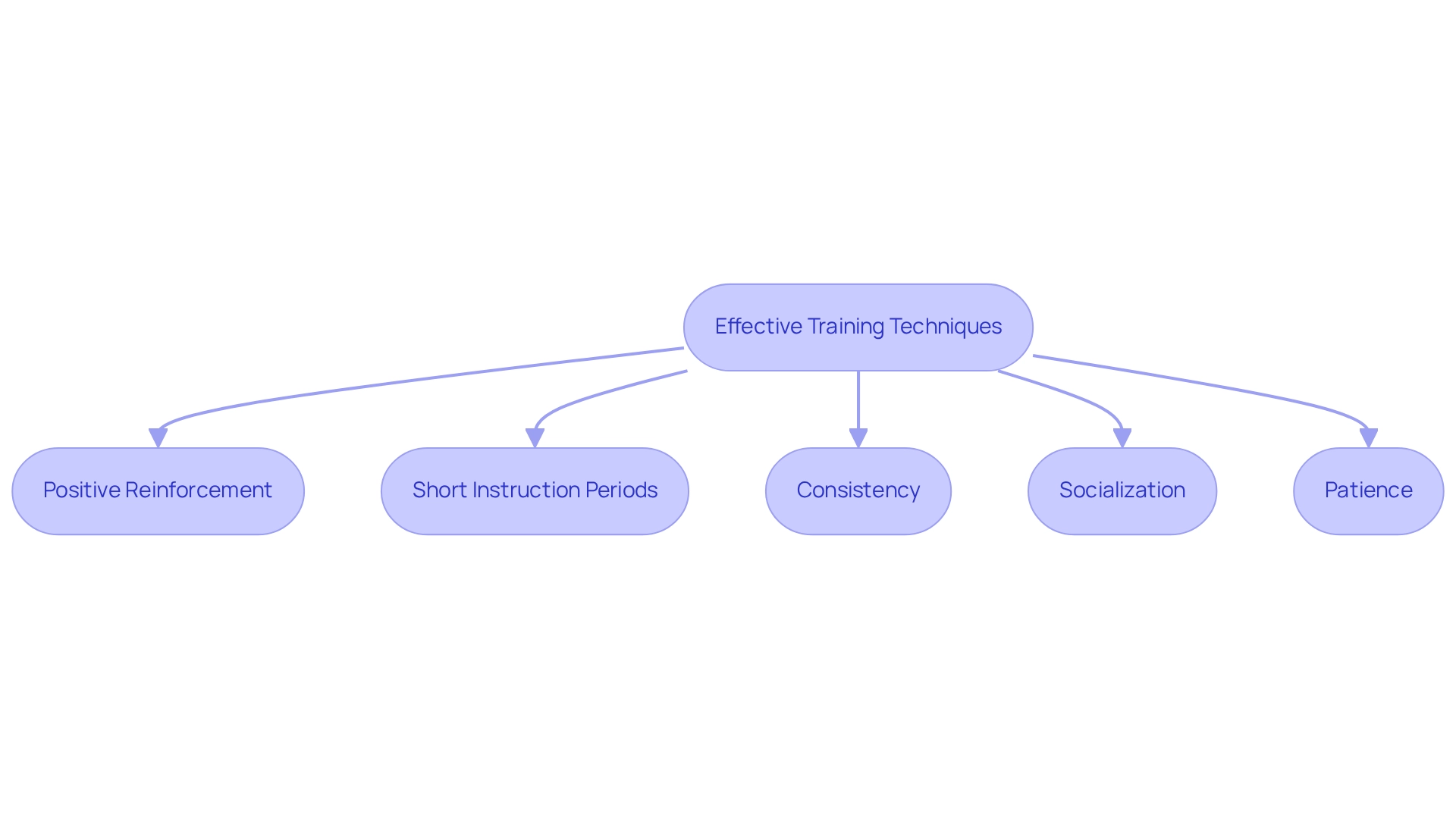
Troubleshoot Common Training Challenges
Training a husky puppy can indeed present unique challenges that require thoughtful and tailored strategies. It’s important to recognize that you’re not alone in facing these issues, and together we can navigate them with care and understanding.
-
Distraction: Huskies are known for their curious nature, which can lead to distractions during training sessions. To help your furry friend focus, start your training in a calm environment and gradually introduce distractions as they become more attentive. This gentle approach allows them to learn to concentrate even amidst various stimuli. Remember, humans have a social connection range of about 10 feet, so minimizing distractions within this distance can significantly enhance your dog’s ability to learn and stay engaged.
-
Stubbornness: If your young Husky seems resistant to commands, it’s essential to approach this with patience and creativity. Utilizing high-value treats and engaging training methods can make a world of difference. Sometimes, simply altering the type of reward can rekindle their interest and motivation. Clarity in commands is vital; as an expert wisely noted, “Dogs don’t necessarily need structure, they need clarity.”
-
Barking: Excessive barking may be a sign of boredom or anxiety, which can be concerning for both you and your pet. To address this, consider increasing their physical and mental stimulation through interactive play and engaging toys. Involving your dog in activities not only enriches their experience but can also significantly reduce unwanted barking.
-
Jumping Up: If your dog has a tendency to jump on people, teaching them to sit when greeting can be an effective solution. Rewarding them for keeping all four paws on the ground reinforces calm behavior during interactions, fostering a more pleasant experience for everyone involved.
-
Chewing: Redirecting inappropriate chewing behavior is crucial for protecting your belongings. Providing suitable chew toys can help guide your puppy towards acceptable items. If they target furniture, supervising them closely and gently guiding them back to their toys teaches them what is appropriate to chew on, ensuring a harmonious living environment.
-
Clicker Method: Introducing clicker methods can enhance communication and learning between you and your Husky. This technique uses a clicking sound to signify desired behavior and works wonderfully alongside positive reinforcement. By anticipating these challenges and thoughtfully implementing these solutions, you can cultivate a more effective training experience for your husky puppy, ultimately leading to a loving and well-behaved companion.
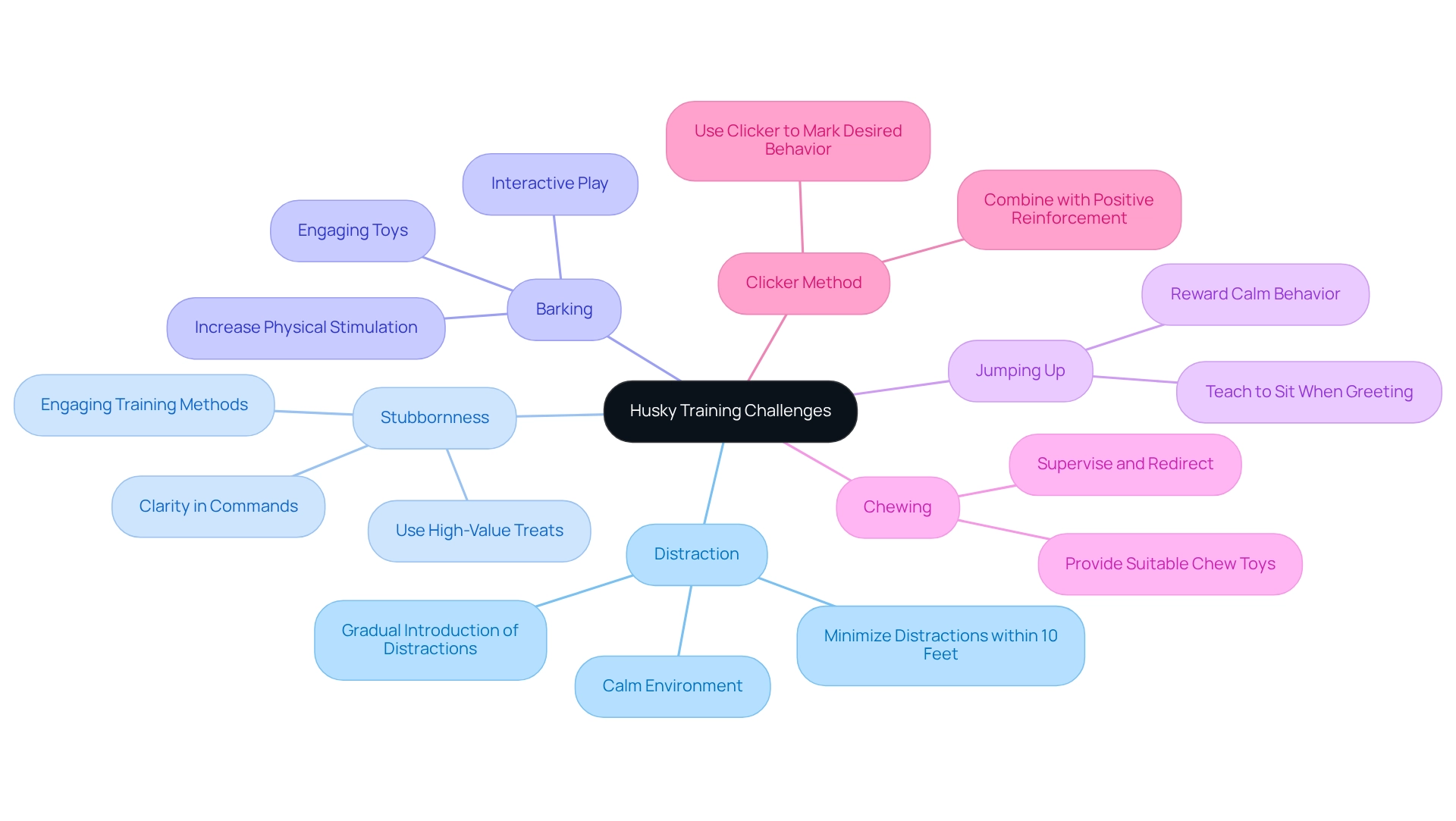
Conclusion
Understanding the unique traits of Siberian Huskies is crucial for successful training. These intelligent and energetic dogs thrive on both physical and mental stimulation, which can be lovingly fostered through positive reinforcement and engaging activities. By recognizing their social nature and the importance of consistent training routines, owners can cultivate a strong bond with their Huskies while honoring their independence and intelligence.
Creating a distraction-free environment and gathering the right training tools is essential for effective training sessions. High-value treats, clickers, and interactive toys can significantly enhance the learning experience, making training enjoyable for both the puppy and the owner. Embracing modern, positive reinforcement training methods, rather than outdated dominance techniques, ensures a more productive and compassionate approach to teaching commands.
Implementing effective training techniques, such as positive reinforcement, consistency, and socialization, lays the foundation for a well-mannered Husky. Patience in the face of challenges, such as stubbornness and distractions, is vital to maintaining progress and building trust. By addressing common training issues with tailored strategies, owners can navigate the complexities of training their Husky puppies, leading to a harmonious relationship and a happy, well-adjusted pet.
In conclusion, training a Siberian Husky requires understanding, preparation, and a commitment to effective methods. By embracing their unique characteristics and adopting a compassionate approach, owners can ensure a rewarding training journey that results in a loyal and loving companion. With the right strategies in place, the challenges of training a Husky can transform into an enriching experience, strengthening the bond between owner and pet and ultimately enhancing the joy of companionship.

